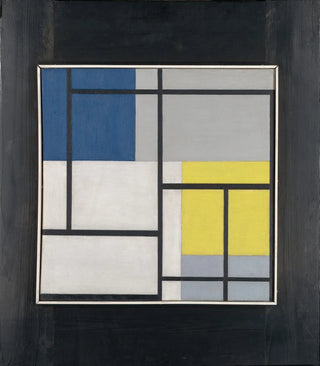Art print | Simultaneous composition - Theo van Doesburg


View from behind

Frame (optional)
In the vast panorama of modern art, few works manage to capture the essence of avant-garde movements with as much force as "Composition simultanée" by Theo van Doesburg. This iconic piece, created in 1921, embodies the ideals of neoplasticism, an artistic movement of which van Doesburg was one of the main architects. The art print of this work allows viewers to immerse themselves in a universe where geometry and color intertwine to create a novel visual harmony. Contemplating this composition, one is immediately transported into a dialogue between form and color, inviting reflection on the very structure of art.
Style and uniqueness of the work
"Composition simultanée" stands out for its bold approach and vibrant color palette. Straight lines and geometric shapes are arranged with surgical precision, revealing a sense of balance and dynamics that transcend mere visuals. Van Doesburg skillfully plays with contrasts, alternating black, white, and colored surfaces, thus creating a tension that captures the eye and stimulates the mind. This work is not just a visual representation but a true aesthetic manifesto, where each element is carefully designed to interact with the others. The composition, both rigorous and free, reflects the aspirations of an era seeking renewal, where art was meant to mirror a society in full transformation.
The artist and his influence
Theo van Doesburg, born in 1883 in the Netherlands, is a central figure of the De Stijl movement, which advocates an aesthetic based on simplicity and abstraction. As a theorist and practitioner, he spread his ideas through his works, writings, and collaborations. Van Doesburg also influenced other artists, such as Piet Mondrian, with whom he shared a common vision of art as a means to transcend everyday life. His ability to combine art, architecture, and design left an indelible mark on the development of modern art. "Composition simultanée" reflects this quest for universality, a work that aspires to transcend cultural and temporal boundaries, and

Matte finish

View from behind

Frame (optional)
In the vast panorama of modern art, few works manage to capture the essence of avant-garde movements with as much force as "Composition simultanée" by Theo van Doesburg. This iconic piece, created in 1921, embodies the ideals of neoplasticism, an artistic movement of which van Doesburg was one of the main architects. The art print of this work allows viewers to immerse themselves in a universe where geometry and color intertwine to create a novel visual harmony. Contemplating this composition, one is immediately transported into a dialogue between form and color, inviting reflection on the very structure of art.
Style and uniqueness of the work
"Composition simultanée" stands out for its bold approach and vibrant color palette. Straight lines and geometric shapes are arranged with surgical precision, revealing a sense of balance and dynamics that transcend mere visuals. Van Doesburg skillfully plays with contrasts, alternating black, white, and colored surfaces, thus creating a tension that captures the eye and stimulates the mind. This work is not just a visual representation but a true aesthetic manifesto, where each element is carefully designed to interact with the others. The composition, both rigorous and free, reflects the aspirations of an era seeking renewal, where art was meant to mirror a society in full transformation.
The artist and his influence
Theo van Doesburg, born in 1883 in the Netherlands, is a central figure of the De Stijl movement, which advocates an aesthetic based on simplicity and abstraction. As a theorist and practitioner, he spread his ideas through his works, writings, and collaborations. Van Doesburg also influenced other artists, such as Piet Mondrian, with whom he shared a common vision of art as a means to transcend everyday life. His ability to combine art, architecture, and design left an indelible mark on the development of modern art. "Composition simultanée" reflects this quest for universality, a work that aspires to transcend cultural and temporal boundaries, and






